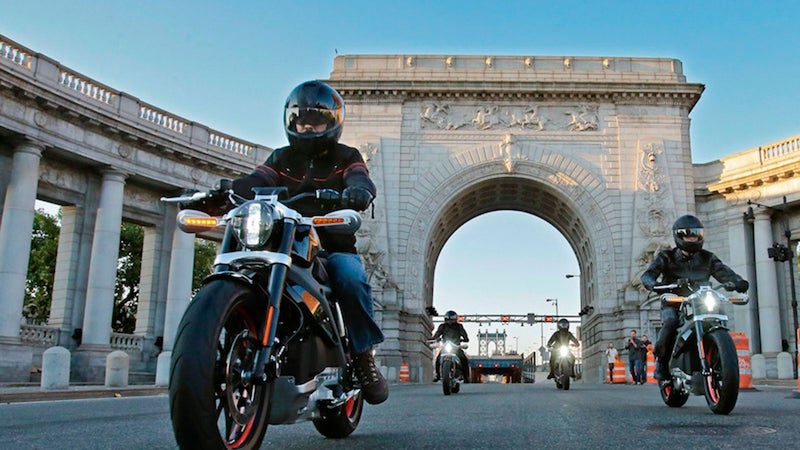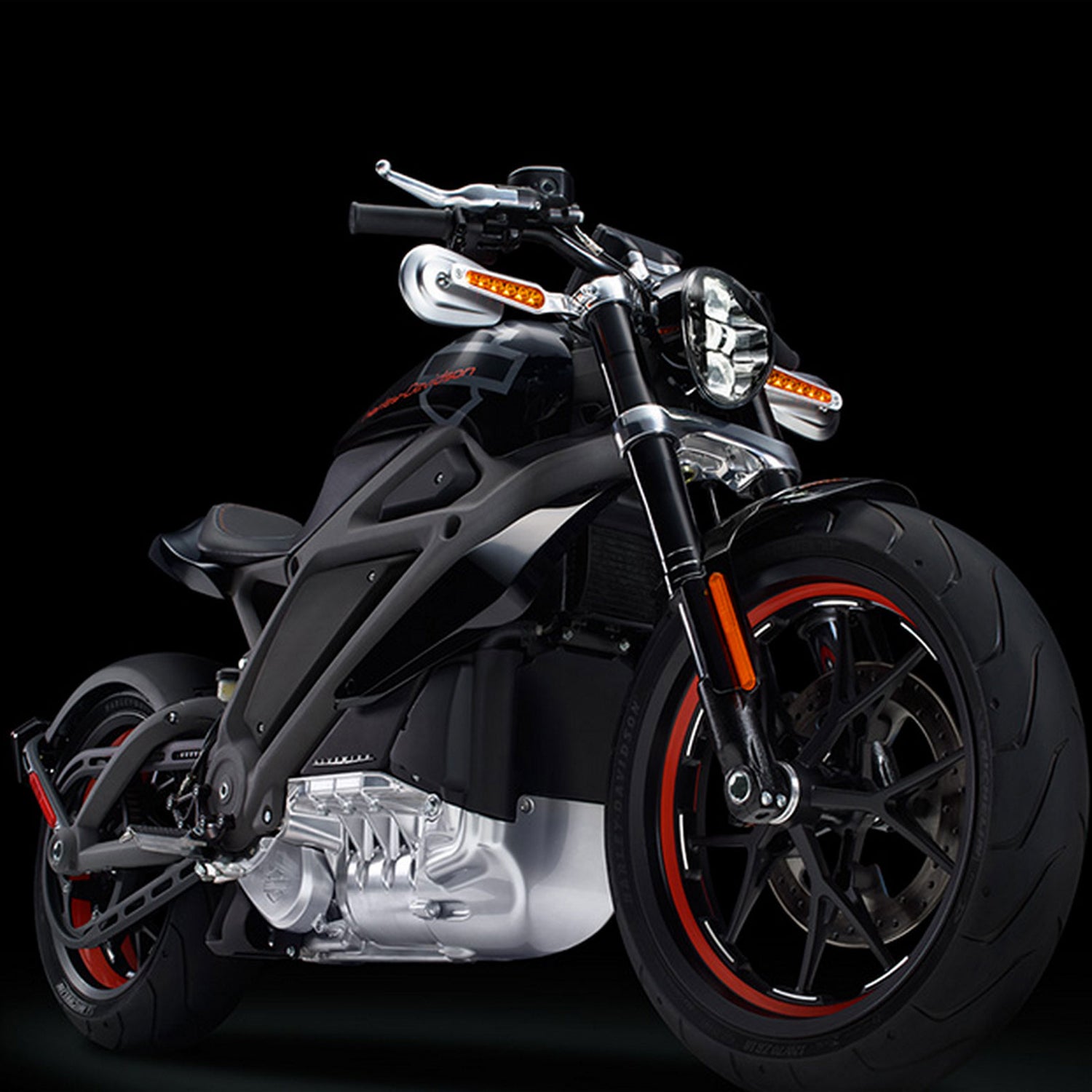It might surprise you that the Harley-Davidson Motor Company—inventors of the asphalt-shaking V-Twin engine—is making an electric motorcycle. It might surprise you even more that the e-bike actually rides like, well, a Harley.
In order to achieve that feat, Harley-Davidson didn’t just add the LiveWire electric motorcycle to its full-scale production lineup. Instead, the company has been gathering feedback on the bike from its customers for the past year. The end goal: build an electric motorcycle that lives up to the iconic brand’s legacy of muscular, aggressive rides.
The first ran throughout 2014, traveling to the largest Harley dealerships around the U.S. to offer test rides and gauge riders’ responses. The tour will resume this month, with stops planned in the U.S., Canada, the UK, Italy, France, Germany, and the Netherlands. Harley says it will visit Asia, too, likely planning tour dates in Japan where motorcycle manufacturers thrive, but no specific countries have been announced.

Making the bike ride like a Harley isn’t the only challenge the company faces. There’s also the high price tag and limited range. “Right now, the electric bike would travel half the distance buyers want and cost $50,000, about 50 percent more than customers would want to pay,” says Harley-Davidson president and COO Matt Levatich.
The biggest gripe riders had with the LiveWire prototype? Its lithium-ion battery has a range of only 53 miles. Zero and Brammo both offer fully electric, highway-ready motorcycles with battery ranges well over 100 miles that cost around $15,000—or less than a third of the price of the LiveWire.
Granted, these bikes both lack the raw power of the Harley. The LiveWire’s 74-horsepower electric motor produces 52 foot-pounds of torque, giving the bike a top speed of 92 mph and the ability to go from zero to 60 mph in about four seconds.
Although Harley won’t say what the battery pack weighs, we can assume it’s very heavy. (An EV expert at Wired estimated that a battery with the range and recharge time of Harley’s would weigh .)��
To cut down on weight, Harley developed a cast aluminum perimeter frame that weighs only 14 pounds, about the equivalent of the Specialized S-Works Tarmac road bike. The LiveWire’s wheels also have hollow spokes: Harley claims they’re among the lightest aluminum wheels ever produced.
Perhaps the most unique innovation on the LiveWire is its chassis. As your speed increases, so do the chassis vibrations. Read: the faster you go, the louder the bike. It’s not a Screaming Eagle exhaust system, but it's enough to catch other drivers' attention.
Then there are its looks. The LiveWire is by far Harley’s sportiest-looking bike. With the seat hovering above the rear wheel, the forward-leaning riding position looks more like what you’d find on a Yamaha R1 or a Suzuki Hayabusa than on a traditional Harley. With no exhaust system or gear box, the bike has a sleek, minimalist appeal. If it’s bad enough for , then it’s bad enough for us.
If it's bad enough for Captain America in the new Avengers movie, then it's bad enough for us.
The V-Rod—a successful attempt to attact young customers looking for a sporty bike—was Harley's last major innovation. The LiveWire is the company’s next big move, designed to appeal to those environmentally conscientious urban commuters who aren’t ready to make the jump to a fixie or Prius. Both new bikes are part of Harley’s overall goal to replace its aging clientele with young consumers. ( over 2013 suggests that the plan is working.)��
The LiveWire is still at least a year away from joining Harley’s full-scale production lineup. But with something this fast and this mean coming soon from America’s most rebellious motor company, we only have one thing to say: Live to Ride, Ride to Live.


